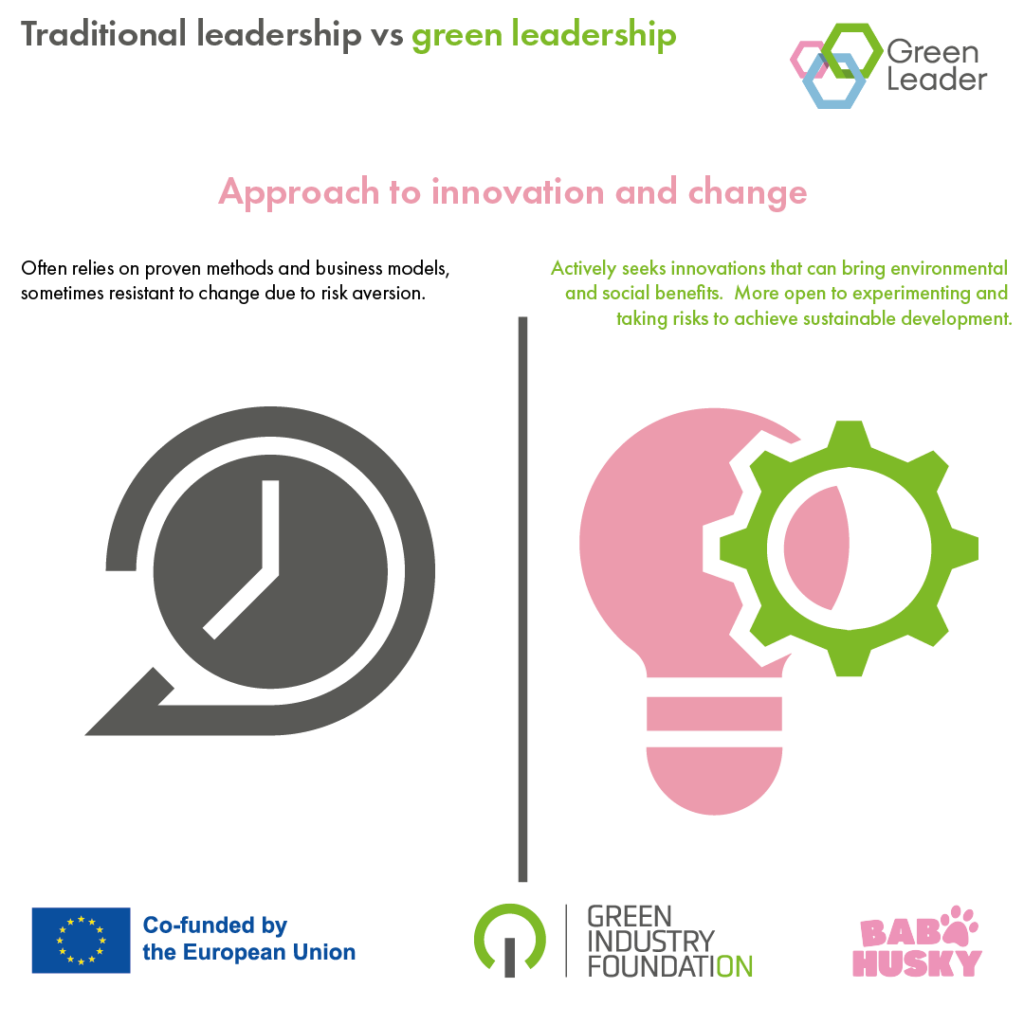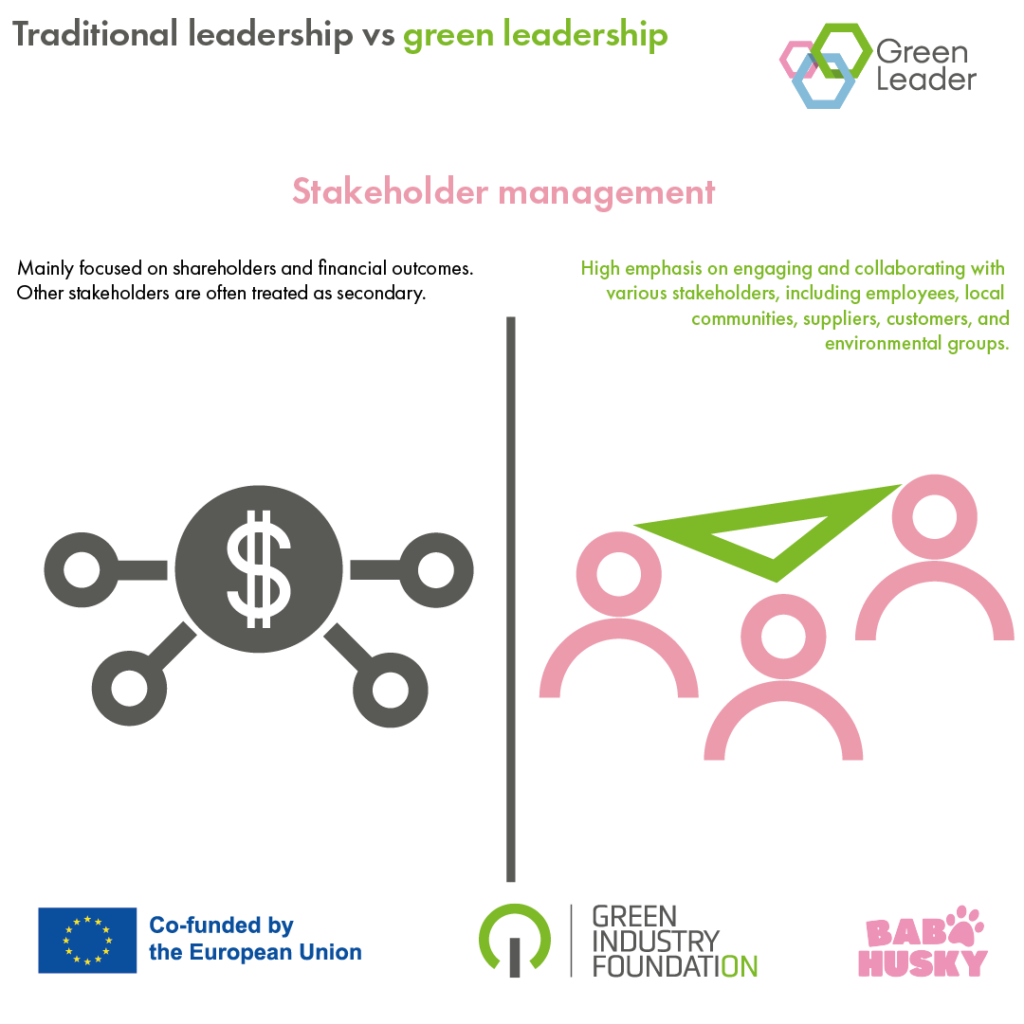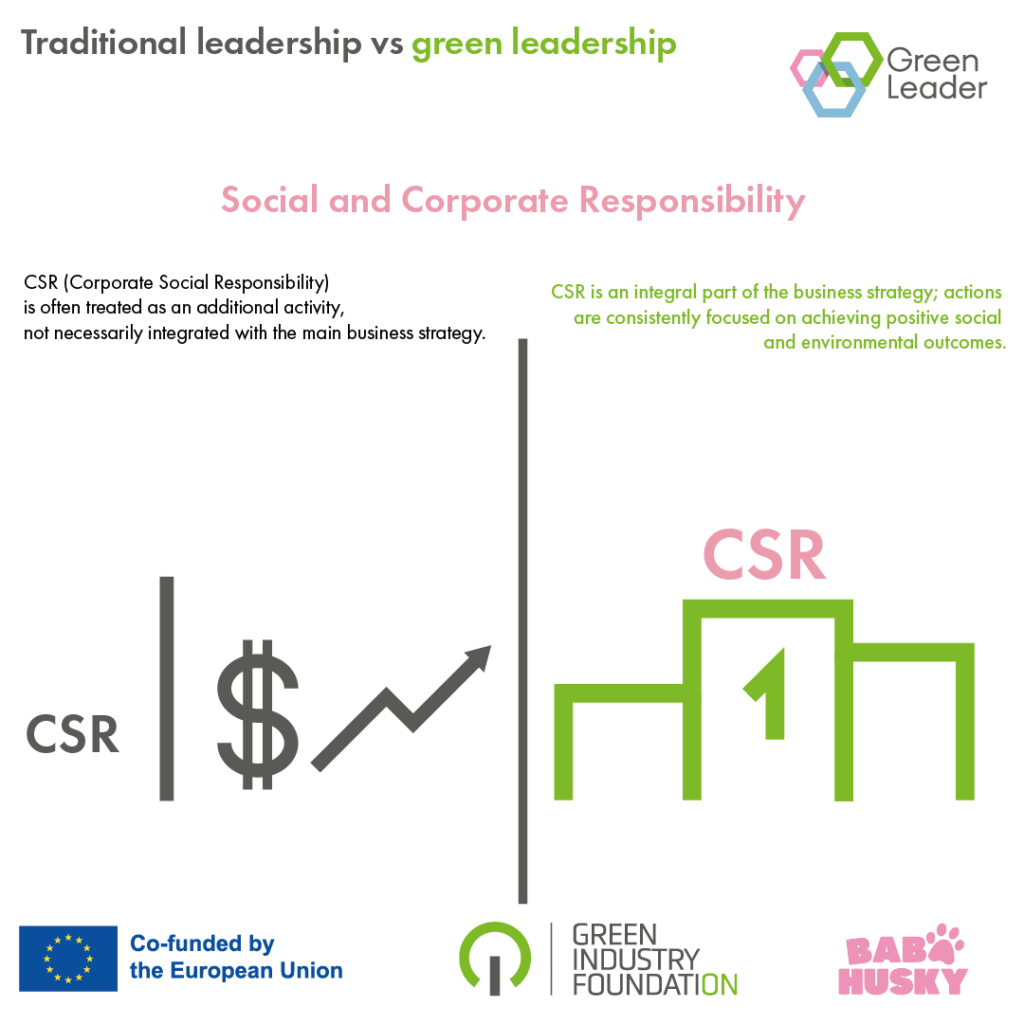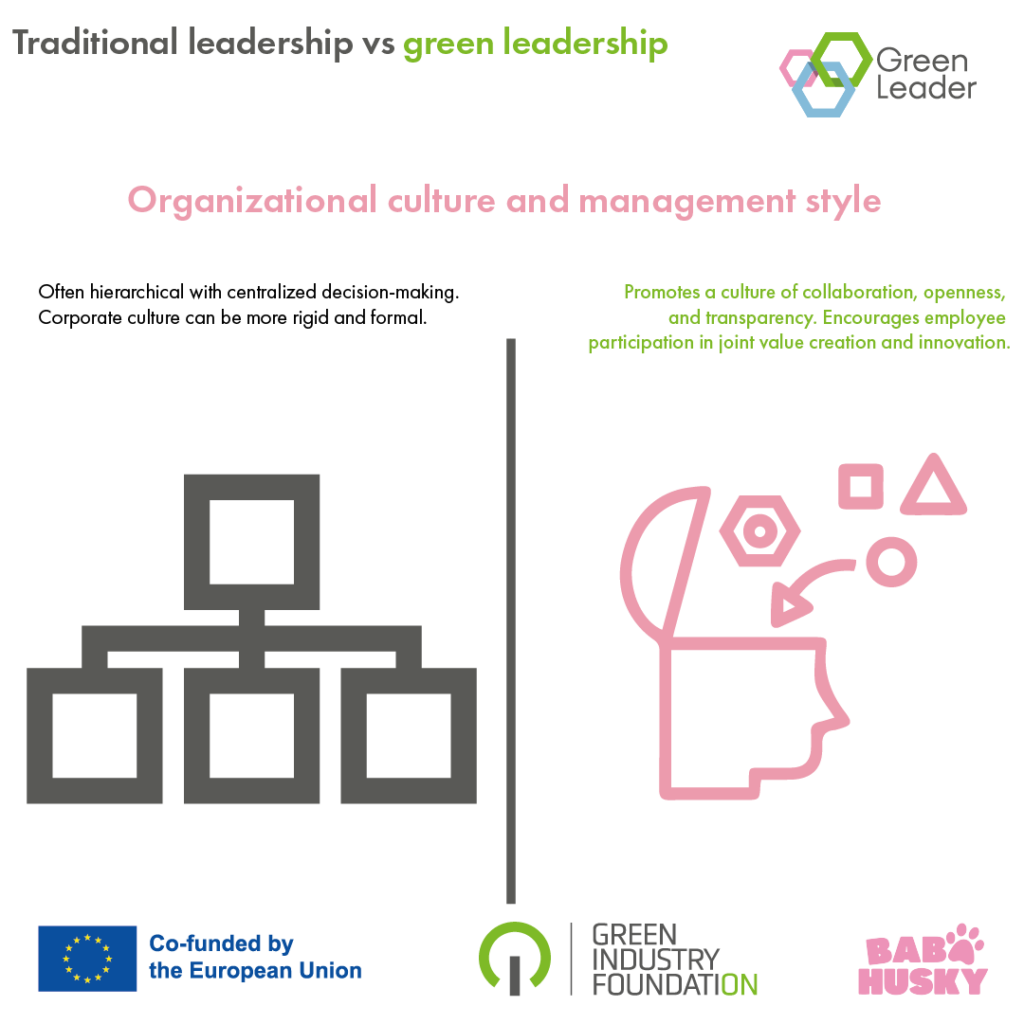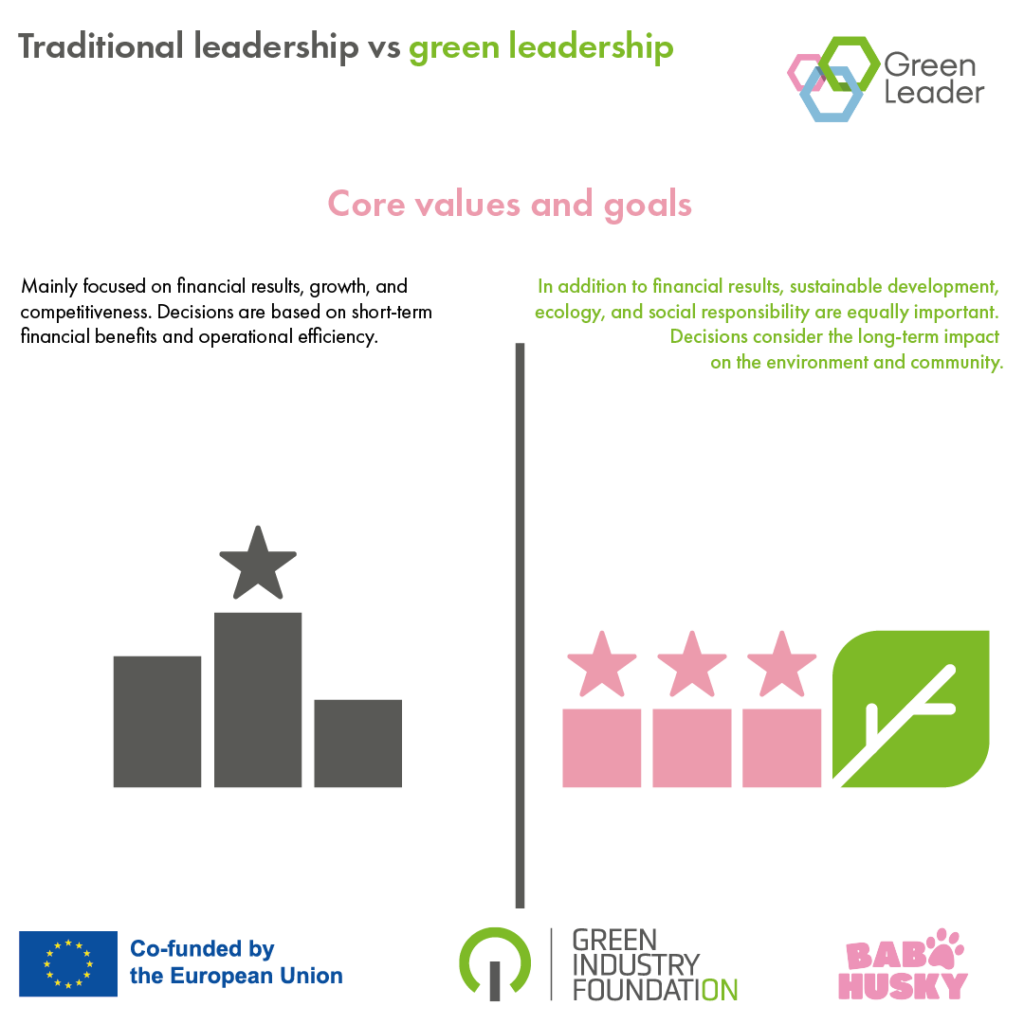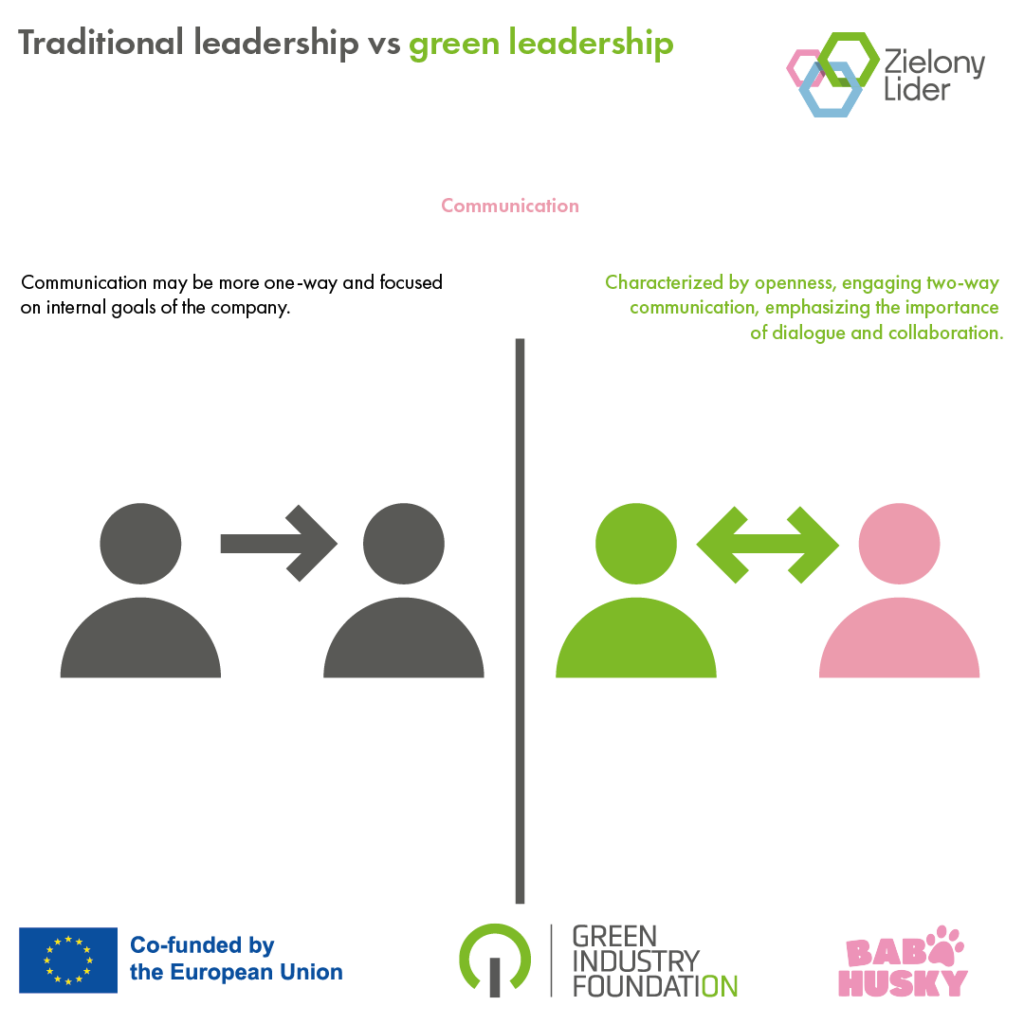“Exploring Traditional Leadership vs. Green Leadership: A Comparative Overview”
In today’s rapidly evolving business landscape, leadership styles play a pivotal role in shaping organizational strategies and driving sustainable growth. Let’s delve into the distinctions between traditional leadership and green leadership through a series of infographics:
- Core values and goals: Traditional leadership primarily focuses on financial results, growth, and competitiveness. In contrast, green leadership integrates sustainable development, ecology, and social responsibility into its core values, emphasizing long-term impact.
- Resource management: While traditional leadership aims to maximize resource utilization for profit enhancement, green leadership prioritizes efficient and sustainable resource use, emphasizing environmental protection and carbon footprint reduction.
- Approach to innovation and change: Traditional leadership often relies on proven methods and business models, sometimes resistant to change due to risk aversion. On the other hand, green leadership actively seeks innovations that bring environmental and social benefits, embracing experimentation and risk-taking for sustainable development.
- Organizational culture and management style: Traditional leadership tends to be hierarchical with centralized decision-making, fostering a more rigid and formal corporate culture. In contrast, green leadership promotes collaboration, openness, and transparency, encouraging employee participation in value creation and innovation.
- Stakeholder management: While traditional leadership primarily focuses on shareholders and financial outcomes, green leadership places a high emphasis on engaging various stakeholders, including employees, local communities, suppliers, and customers, to achieve holistic outcomes.
- Social and corporate responsibility: For traditional leadership, Corporate Social Responsibility (CSR) may be treated as an additional activity, not fully integrated into the main business strategy. In contrast, green leadership views CSR as integral to the business strategy, consistently focusing on positive social and environmental outcomes.
- Communication: Traditional leadership communication tends to be more one-way and internally focused. Green leadership emphasizes openness and two-way communication, recognizing the importance of engaging stakeholders.
These infographics offer valuable insights into the contrasting paradigms of traditional and green leadership, highlighting the shift towards sustainable and socially responsible business practices. By understanding these differences, organizations can chart a course towards ethical and environmentally conscious leadership.
Project „Green Leader” is co-financed by the European Union (project no: 2022-2-PL01-KA210-ADU-000094509). The European Commission is not responsible for the content produced. All results achieved within this project are made available under an open license. They can be used free of charge and without restrictions. Copying or processing these materials in whole or in part without the author’s permission is prohibited. In the case of using the results, it is necessary to provide the source of funding and its authors.
This materials reflect solely the views of the author and the European Union is not responsible for any use of the information contained therein
